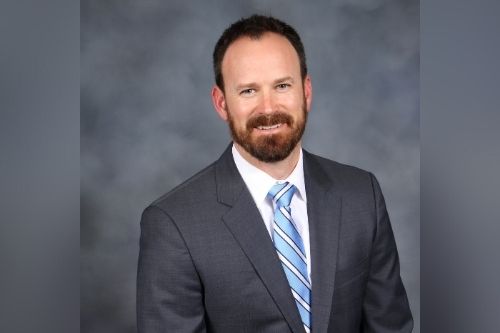

Wes Robinson entered the excess and surplus (E&S) lines property insurance market at a pivotal moment in history. It was May 2002, just eight months after 9/11, and the United States was still trying to recover and control the significant reverb that the attacks caused in the capital markets.
After an initial four-year stint as an underwriter at Travelers from 1998-2002, Robinson joined the property practice at Risk Placement Services (RPS), E&S wholesale broker and managing general agency.
“I came over to the wholesale insurance world in May 2002. The timing was interesting because it was right after 9/11 and a lot of business was starting to surge towards the E&S market,” said Robinson. “I took what I saw as a very unique opportunity in a field that I was not overly familiar with. As an underwriter, prior to joining RPS, I had to say ‘no’ a lot – and I don’t enjoy saying ‘no’. I knew that in the E&S market ‘no’ was not an option; we had to find solutions.
“Everything we work on in the E&S market is difficult for any number of reasons. If it has landed on our desks, that means it’s complicated. Our job is to provide solutions for these risks. Every deal is like a puzzle that we need to solve – that’s what sounded really interesting to me back in 2002, and it’s still what captures my attention today.”
Fast-forward nearly 20 years and Robinson remains with RPS as the National Property Brokerage President. In that time, he’s seen gross written premium (GWP) in the E&S market increase from roughly $9 billion in 2002 to $41 billion in 2020.
The growth that he first witnessed in 2002 following the 9/11 attacks could be described as similar in nature to that which the E&S market is experiencing now as a result of another systemic event – the COVID-19 pandemic.
“It’s hard to analyze and draw lines from one event to the other, but I would say that the market has responded in a similar way [to 9/11 and COVID-19] in that capacity has been impacted, lines are being cut down, rates are going up, and it’s being felt on all lines of insurance,” Robinson told Insurance Business. “But there are some differences. 9/11 was a localized event from a geographic perspective, but it caused significant reverb through the capital markets on the insurance side. Meanwhile, the COVID-19 pandemic has impacted every single business in the United States, from main street all the way up to corporate America, and that will have a trickle effect on to the insurance industry.”
What will be interesting to watch now is how the industry responds to the COVID-19 pandemic (once we’re out the other side) with product innovation and potential solutions for pandemic risk.
In 2002, when Robinson entered the E&S property space, terrorism insurance was not mainstream. It was not until the Terrorism Risk Insurance Act (TRIA) was signed into law by President George W. Bush on November 26, 2002, that the industry really had to start engaging with terrorism exposure. Within a few short years, the E&S market had taken things a step further, offering private, standalone terrorism insurance with broader coverage and more attractive premiums than TRIA.
“In the E&S industry, we’re always looking to innovate, and make adaptations and changes where necessary,” said Robinson. “Since developing standalone terrorism insurance, the market has now created specific coverage for active shooter risk. We also have riot, strike and civil commotion coverage that is being discussed a lot more in the industry today, because mainstream insurers want to restrict coverage for those exposures after what we’ve seen in the past year. A lot of these things weren’t even part of the conversation back in 2002, but they’re examples of how the E&S industry reacts to problems and finds solutions.”
With regards to post-COVID-19 innovation, the big question mark hovers around pandemic insurance, which is not actually a new product, but is one that has historically been unaffordable, unattractive, and therefore, quite redundant.
“If we can figure out as an industry how to build a solution that is scalable, affordable, and easily available to anyone who wants it, that will be a home run for the insurance industry,” Robinson commented. “I do expect this to come out of the E&S space because that’s what we’re good at. I imagine pandemic coverage might look similar to terrorism coverage in that there’s some level of government involvement. But even with TRIA, the insurance industry still got together and started selling standalone terrorism insurance policies, so I could absolutely see that happening with pandemic insurance as well.”
